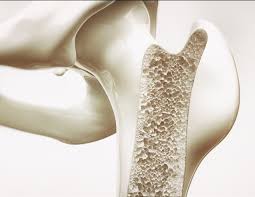
Breaking News
 Russiagate Opens the Door to Covid
Russiagate Opens the Door to Covid
 BrightLearn - RFK Jr.'s Impact on American Health Policy, an interview with Del Bigtree
BrightLearn - RFK Jr.'s Impact on American Health Policy, an interview with Del Bigtree
 Eric And Donald Trump Jr. To Help Launch New U.S. Manufacturing SPAC
Eric And Donald Trump Jr. To Help Launch New U.S. Manufacturing SPAC
Top Tech News
 'Robot skin' beats human reflexes, transforms grip with fabric-powered touch
'Robot skin' beats human reflexes, transforms grip with fabric-powered touch
 World's first nuclear fusion plant being built in US to power Microsoft data centers
World's first nuclear fusion plant being built in US to power Microsoft data centers
 The mitochondria are more than just the "powerhouse of the cell" – they initiate immune...
The mitochondria are more than just the "powerhouse of the cell" – they initiate immune...
 Historic Aviation Engine Advance to Unlock Hypersonic Mach 10 Planes
Historic Aviation Engine Advance to Unlock Hypersonic Mach 10 Planes
 OpenAI CEO Sam Altman Pitches Eyeball-Scanning World ID to Bankers
OpenAI CEO Sam Altman Pitches Eyeball-Scanning World ID to Bankers
 New 3D-printed titanium alloy is stronger and cheaper than ever before
New 3D-printed titanium alloy is stronger and cheaper than ever before
 What is Unitree's new $6,000 humanoid robot good for?
What is Unitree's new $6,000 humanoid robot good for?
 "No CGI, No AI, Pure Engineering": Watch Raw Footage Of 'Star Wars'-Style Speeder
"No CGI, No AI, Pure Engineering": Watch Raw Footage Of 'Star Wars'-Style Speeder
 NASA's X-59 'quiet' supersonic jet rolls out for its 1st test drive (video)
NASA's X-59 'quiet' supersonic jet rolls out for its 1st test drive (video)
 Hypersonic SABRE engine reignited in Invictus Mach 5 spaceplane
Hypersonic SABRE engine reignited in Invictus Mach 5 spaceplane
Bandage heals broken bones by trapping a biochemical

Ordinarily, the adenosine that is naturally sent to bone injuries gets quickly metabolized by the body. This ceases the healing "boost" that the chemical initially provides. Led by Prof. Shyni Varghese, scientists at North Carolina's Duke University set about developing a method of trapping and harboring adenosine at the injury site, allowing it to perform its healing duty over a longer period of time.
The result is a prototype bandage that could be surgically applied directly to broken bones. It incorporates boronate molecules, which form bonds with adenosine molecules that are present at the injury site. As those bonds gradually weaken, the adenosine is slowly released – but only where it's needed.
"Adenosine is ubiquitous throughout the body in low levels and performs many important functions that have nothing to do with bone healing," says Varghese. "To avoid unwanted side effects, we had to find a way to keep the adenosine localized to the damaged tissue and at appropriate levels."
In lab tests, broken bones in mice were treated with three types of bandages. These consisted of bandages that were designed to retain adenosine produced by the animals, bandages that were already "primed" with adenosine, and bandages that neither contained nor could trap the chemical.
After a three-week period, although all of the mice showed signs of healing, those that were treated with the two types of adenosine bandages showed better bone formation, higher bone volume and better vascularization. The primed bandages could prove to be particularly useful for osteoporosis patients, whose bodies don't produce adenosine in response to broken bones.

 Dead? Or Just 'Mostly' Dead?
Dead? Or Just 'Mostly' Dead?

